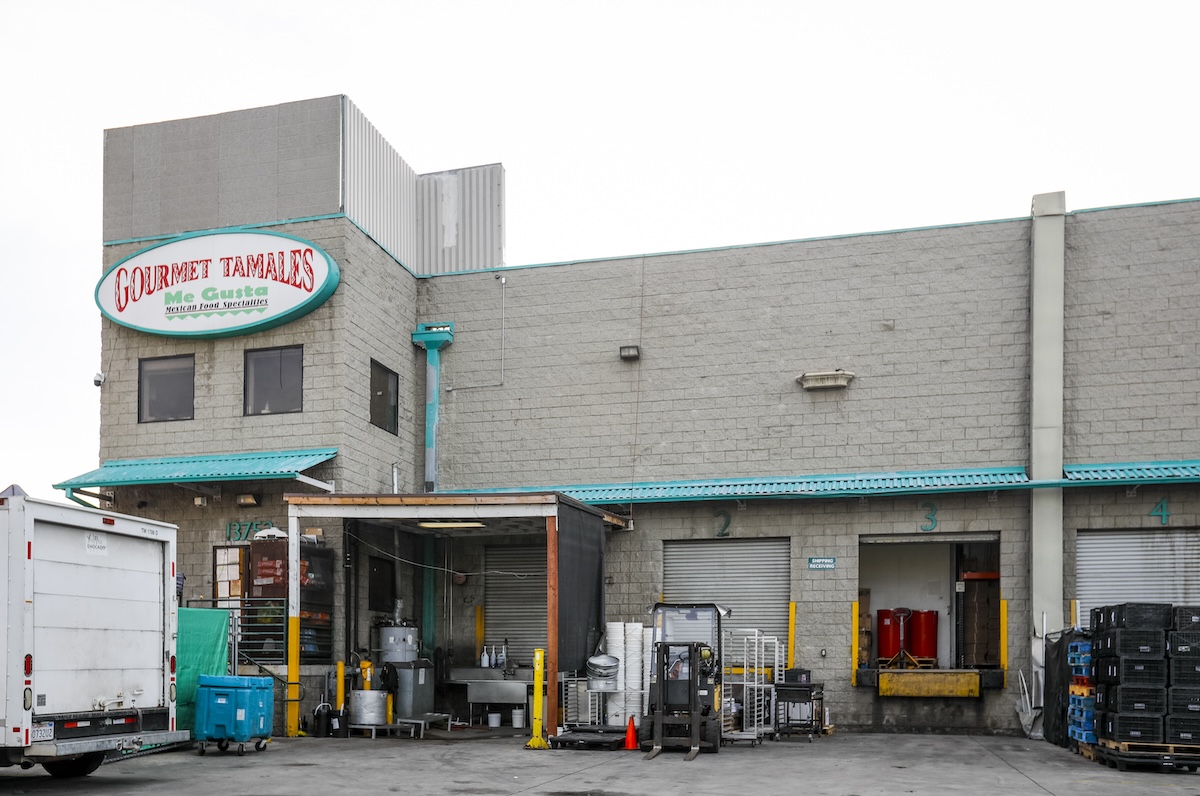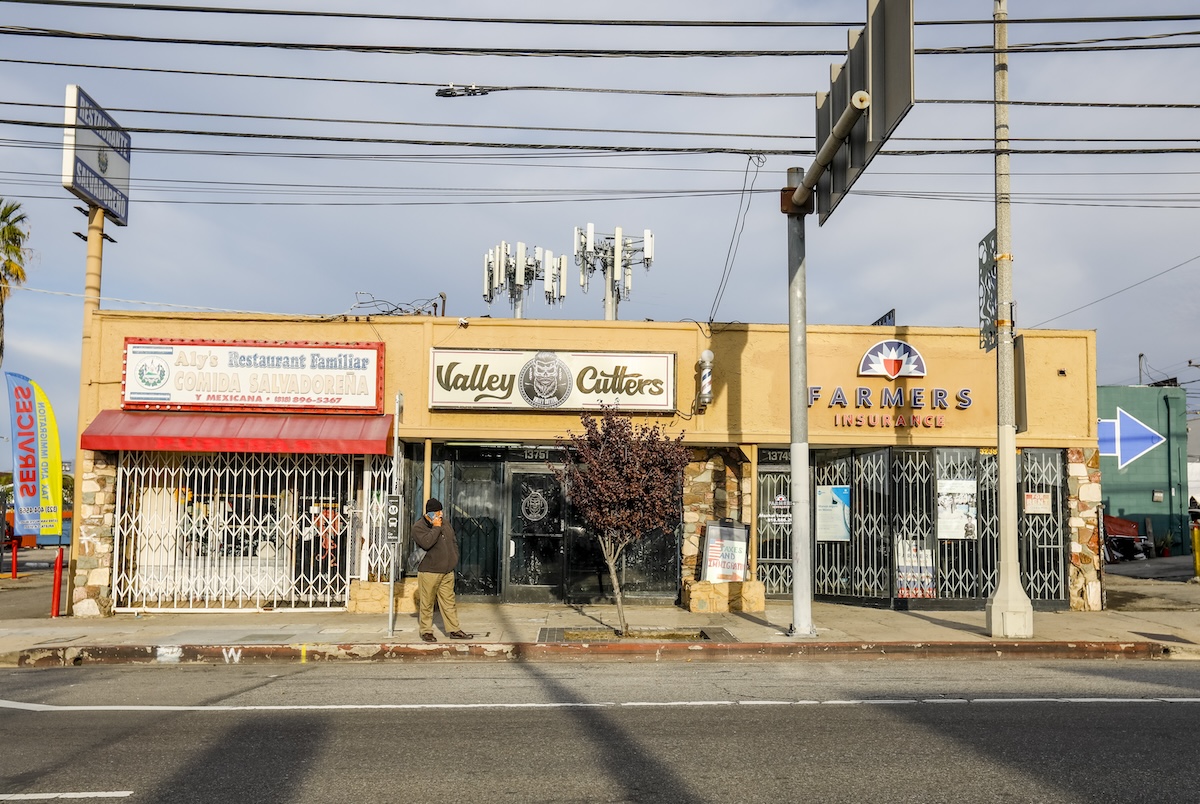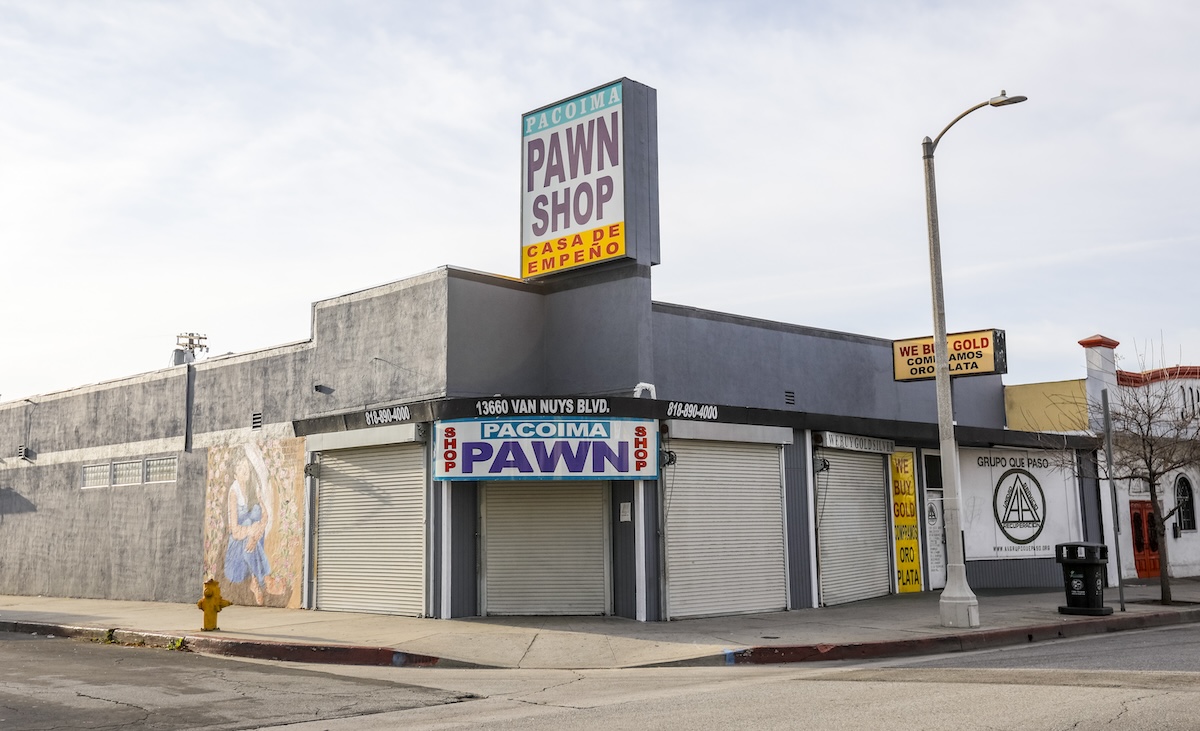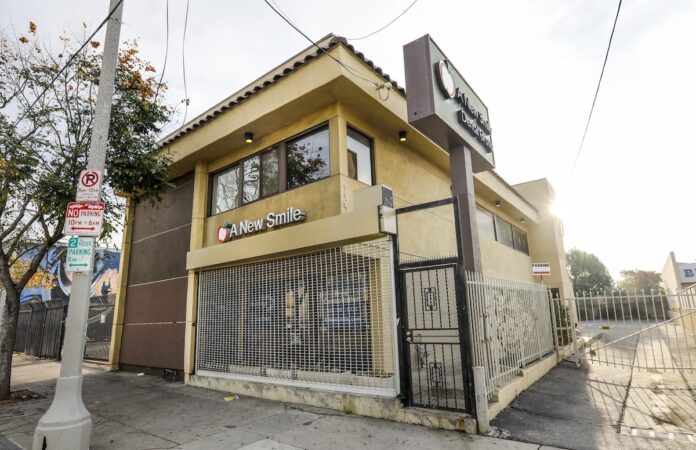Construction is scheduled to start next year on a railway along Van Nuys Boulevard, and it will permanently displace an estimated 80 businesses primarily in Van Nuys and temporarily interrupt operations at many others during the long construction phase – a situation that upsets many who spent years or even lifetimes building up their companies.
“All I care about is that we can stay open,” said Parham Ramtin, owner of A New Smile Dental, a Pacoima-based practice whose customer base is made up of roughly 80% local residents.
A New Smile, which according to Ramtin, generates roughly $8,000 per day, loses 5% of a month’s revenue each day the dentistry is closed. He said his business can tolerate five days only before “facing major losses” that could result in layoffs or even cause his operation to shutter.
“If they close the road, I’m going to be dead,” Robert Taban, owner of Pacoima Gas, a gasoline station he purchased only two years ago, said. “It’s going to kill my business.” Pacoima Gas is open 24 hours and sees roughly 1,000 cars each day.
The proposed track, called the East San Fernando Valley Light Rail Transit Project, will cost $3.7 billion and is comprised of two segments, a southern and a northern section, both of which will make up a 9-mile stretch.
The project is currently in the design and engineering phase. Construction is expected to start next year, and the project is to be completed by 2030.
Businesses scared

in the Pacoima neighborhood. (Photo by David Sprague)
The railway’s developer, the Los Angeles County Metropolitan Transportation Authority, argues that the new light rail will improve access to crucial destinations and connect transit users to the San Fernando Valley network. But several business owners say they are in the dark about what the project entails, how long construction will last and the severity of the business interruption.
“I think it will impact us in a negative way,” said Napoleon Ortega, who has owned Me Gusta Gourmet Tamales in Pacoima since 2005.
“As it is, it’s really difficult for customers who are coming from east to west on Van Nuys Boulevard to turn left into our facility,” Ortega said. “There’s a lot of traffic on the street.” He fears that with the addition of the metro line the already “vicious street” of Van Nuys will become even less friendly for customers.
“I expect that any disruption to traffic is impacting my business negatively,” said Art Artinian, owner of Pacoima Pawn Shop, which he started from scratch and has managed since 1996. “The community loves us, and we love them.”
Artinian owns another pawn shop in Pasadena on Lake Avenue, which also features a metro line, which, he argues “trashes the place up” and “lowers the standards” of the street.
In a recent survey that sampled 55 Van Nuys Boulevard businesses, about 85% of respondents reported that the light rail construction would disrupt their business negatively, according to a survey conducted by Initiating Change in Our Neighborhoods Community Development Corp., a business assistance organization whose managing director is Roberto Barragan and which is commonly known as ICON CDC. Only 15% reported that construction would not be disruptive.
What’s more, the survey said more than 70% of the business owners do not have leases and rent month to month, “thus exposing themselves to significant displacement due to construction and gentrification.”
Community impact

Pacoima, which has a primarily Hispanic demographic and has historically been considered relatively low income, is one of the areas that will be hit the hardest, as the light rail system’s design takes up the most physical space there.
“I live right by Whiteman Airport, and so my route to my kids’ school is caged in by all of this,” Diosy Reyes, a community inspector with Pacoima Beautiful, a community improvement organization, said. “Our whole community is going to be segregated by this.”
She noted that this will have repercussions including an uptick in traffic, extra pollution and difficulties navigating around the track. For Reyes, the impact the light rail will have on the community is substantial.
“Based off this, we’re going to have one side and the other side. In order to get from one side of town to the other, you’re either going to have to go all the way to Sherman Oaks or all the way to Sylmar,” Reyes said. “If you live in Pacoima, there’s no access to the other side of our community. We’re completely blocked off.”
However, some other leaders believe that the new line, once complete, will bring a bundle of positives to the community.
“The East San Fernando Valley Light Rail Project will benefit the community,” said Stuart Waldman, president of the Valley Industry and Commerce Association. “It’s in an area that is heavily transit dependent. It’s a majority minority area. And for equity purposes, we needed to build rails so people can use it.”
“With 14 transit stations, it definitely has the potential to bring an increase in transit options,” Sonya Blake, president and chief executive of The Valley Economic Alliance, said, noting that it will increase mobility and commerce.
“Opportunities like these can really be a game changer for the Valley, drawing people from L.A. Basin to come and patronize our local businesses,” Blake added.
Waldman suspects that the new railway will spur investment in the surrounding areas, such as by creating more jobs, housing and entertainment opportunities.
“If you’ve driven along Van Nuys Boulevard, or walked along Van Nuys Boulevard, it is blighted. It needs to be rejuvenated,” Waldman said. “And as we’ve seen in North Hollywood, NoHo was a blighted area until the Red and Orange Lines were built. And now it’s a cool area that people want to live in. Lots of businesses, lots of jobs, and it’s a destination that people want to go to. We hope that Van Nuys Boulevard will look like that in a matter of years.”
Still, others fear the new light rail is just another form of neighborhood gentrification.
“This is meant for a better tomorrow, but that better tomorrow isn’t for us,” Reyes said. “It’s for people that are moving into the community, people that are going to take advantage of these resources. It’s just gentrification on my end. I don’t see that it’s for the greater good of this community. I just think it’s something we are being burdened with.”
Relocation program

In anticipation of the predicted displacement, Metro has set aside $37 million in relocation assistance and has drafted an extensive plan that provides local property owners and tenants bonus incentives for those who accept within 60 days of receiving the offer.
It has agreed to pay property owners an additional 20% of up to $500,000 on the property’s appraised value and is also offering relocation benefits to help tenants reestablish themselves in a new location, such as by helping them find a new one, and plans to offer wraparound services tailored to individual needs.
The relocation plan helps Van Nuys businesses by reducing financial hardship along project corridors and allows Metro to stick to its proposed timeline, with a forecasted opening date of 2030, according to Metro.
If given the green light, Metro will require local businesses to relocate prior to the new railway’s construction, which is expected to begin next year.
“We have to be very mindful and deliberate about how we do this to make sure no one gets left behind,” Blake said. “Metro is going to have to be very sensitive and attentive to how they roll out the relocation plan to make sure that it is handled in a way where it is in people’s native languages so that people understand their options, that there’s transparency (and) that there’s adequate renumeration when people are being moved.”
The business relocation plan was approved by the board of Metro in November.
Metro is currently anticipating concurrence from the California Federal Transit Administration, which the agency expects to receive early this year.
“If we do not prepare to upgrade the buildings along Van Nuys Boulevard, if we’re not in a position to make them better and where they can serve the community more, if we continue to have Class D buildings and pawn shops and bail bondsman, then we’ve failed and our elected officials have failed,” Waldman said. “Because this is an opportunity to serve this community and make things better.”
